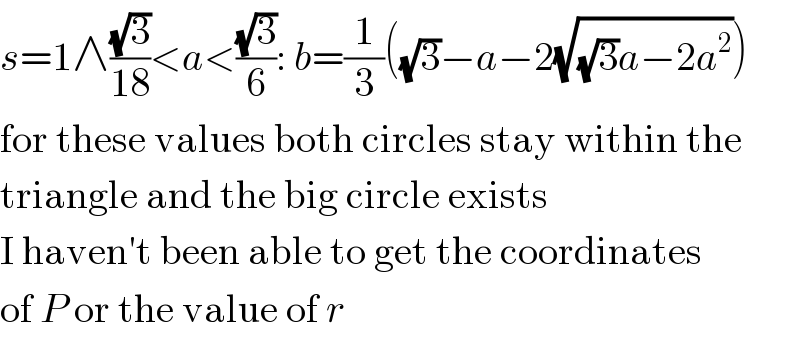
Question and Answers Forum
Question Number 53168 by ajfour last updated on 18/Jan/19

Commented by ajfour last updated on 19/Jan/19

Commented by behi83417@gmail.com last updated on 18/Jan/19

Commented by ajfour last updated on 18/Jan/19

Commented by behi83417@gmail.com last updated on 18/Jan/19

Commented by ajfour last updated on 18/Jan/19

Commented by MJS last updated on 20/Jan/19

Answered by mr W last updated on 19/Jan/19

Commented by mr W last updated on 19/Jan/19

Commented by ajfour last updated on 19/Jan/19

Answered by ajfour last updated on 19/Jan/19

Commented by ajfour last updated on 19/Jan/19

